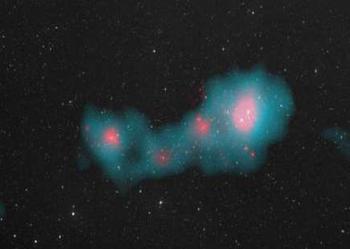One of the highlights of the Planck satellite (ESA), the catalog of galaxy clusters detected in the maps of the diffuse background of the universe, has been made available to the scientific community, on March 21, 2013, at the same time as the first cosmological results from the satellite. Based on 15 months of observation of the entire sky at millimeter waves, this catalog that contains 1227 clusters of galaxies has been established thanks to the major role of scientists at the Particle Physics Division (SPP) and the Astrophysics-AIM Division (Sap) of CEA-IRFU. Through the analysis of distorsions experienced by the diffuse background light when it crosses these clusters, the researchers were able to determine independently the distribution of matter in the universe. Surprise, this distribution appears different from that determined from the diffuse background itself. A difference that could be explained by the existence of massive neutrinos. These smallest particles whose masses could not yet be determined could thus change the distribution of matter in the Universe and influence the formation of galaxy clusters, the largest objects in the Universe.
Read more in the French page
• Structure et évolution de l'Univers Structure and evolution of the Universe
• Institute of Research into the Fundamental Laws of the Universe • The Astrophysics Division (DAp) • The Particle Physics Division



